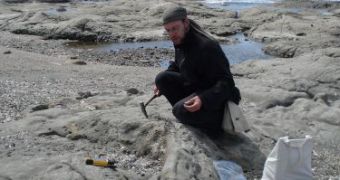Along the South American Pacific coast biodiversity does not decrease towards the poles, say Steffen Kiel and Sven Nielsen from the Christian-Albrechts-Universität zu Kiel (CAU).
Normally, biodiversity decreases towards the poles, but fossil clams and snails found in chile, suggest that this does not happen along the South American Pacific coast.
The scientists analyzed almost 35.000 fossil clams and snails, belonging to about 400 species, and they concluded that this exception to the rule began at the end of the last ice age, some 20.000 to 100.000 years ago.
The reasons for this extremely rich biodiversity were the retreating glaciers, which created a puzzle of many bays, islands and fiords, in which new species developed quite rapidly.
The ancestors of these species came from the northern part of Chile, where, thanks to the warmer climate, they managed to survive the ice age.
Until recently, the specific biodiversity of the southern Chilean coast was well known and praised, as over 500 species of clams and snails are known to the area, which is actually twice as much compared to the same latitudes in the northern hemisphere.
The two scientists report that “opinions include that southern Chile is a museum of diversity where species survived for millions of years in addition to new arrivals; or that Antarctic species colonized this area from the south.”
But after further analysis, Kiel and Nielsen said that their “fossils reject both hypotheses.”
“Biodiversity in this area always decreased toward the south in the geologic past, and we didn’t find any intruders from Antarctica”, stated Steffen Kiel.
Besides the fact that “this area is certainly not a museum of biodiversity”, the two discovered that most of the species and genera that lived in this area some 16 million years ago, had become extinct.
Within the southern Chilean fiords, the most species-rich groups of animals live in rocky shores, which is exactly the habitat created by the retreat of the glaciers.
Sven Nielsen, who has been working on Chilean fossils for many years, said that “molecular biologic investigations on phylogenetic relationships of these species show that they are geologically very young and descended from North Chilean ancestors, and this agrees well with our results.”
He adds that “Charles Darwin, who was the first to discover fossils in this area during his voyage on the 'Beagle', would have been fascinated.”
The two researchers reported their findings in the current issue of the scientific journal Geology.

 14 DAY TRIAL //
14 DAY TRIAL //